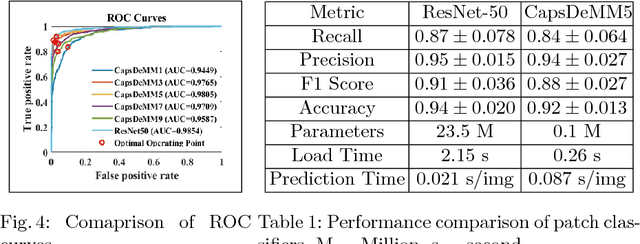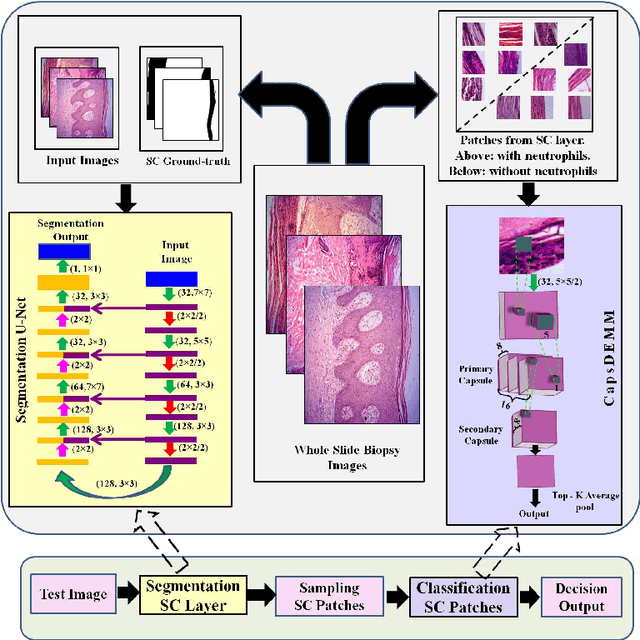Anabik Pal
Deep Cervix Model Development from Heterogeneous and Partially Labeled Image Datasets
Jan 18, 2022Abstract:Cervical cancer is the fourth most common cancer in women worldwide. The availability of a robust automated cervical image classification system can augment the clinical care provider's limitation in traditional visual inspection with acetic acid (VIA). However, there are a wide variety of cervical inspection objectives which impact the labeling criteria for criteria-specific prediction model development. Moreover, due to the lack of confirmatory test results and inter-rater labeling variation, many images are left unlabeled. Motivated by these challenges, we propose a self-supervised learning (SSL) based approach to produce a pre-trained cervix model from unlabeled cervical images. The developed model is further fine-tuned to produce criteria-specific classification models with the available labeled images. We demonstrate the effectiveness of the proposed approach using two cervical image datasets. Both datasets are partially labeled and labeling criteria are different. The experimental results show that the SSL-based initialization improves classification performance (Accuracy: 2.5% min) and the inclusion of images from both datasets during SSL further improves the performance (Accuracy: 1.5% min). Further, considering data-sharing restrictions, we experimented with the effectiveness of Federated SSL and find that it can improve performance over the SSL model developed with just its images. This justifies the importance of SSL-based cervix model development. We believe that the present research shows a novel direction in developing criteria-specific custom deep models for cervical image classification by combining images from different sources unlabeled and/or labeled with varying criteria, and addressing image access restrictions.
CapsDeMM: Capsule network for Detection of Munro's Microabscess in skin biopsy images
Aug 21, 2018



Abstract:This paper presents an approach for automatic detection of Munro's Microabscess in stratum corneum (SC) of human skin biopsy in order to realize a machine assisted diagnosis of Psoriasis. The challenge of detecting neutrophils in presence of nucleated cells is solved using the recent advances of deep learning algorithms. Separation of SC layer, extraction of patches from the layer followed by classification of patches with respect to presence or absence of neutrophils form the basis of the overall approach which is effected through an integration of a U-Net based segmentation network and a capsule network for classification. The novel design of the present capsule net leads to a drastic reduction in the number of parameters without any noticeable compromise in the overall performance. The research further addresses the challenge of dealing with Mega-pixel images (in 10X) vis-a-vis Giga-pixel ones (in 40X). The promising result coming out of an experiment on a dataset consisting of 273 real-life images shows that a practical system is possible based on the present research. The implementation of our system is available at https://github.com/Anabik/CapsDeMM.
Skin disease identification from dermoscopy images using deep convolutional neural network
Jul 24, 2018

Abstract:In this paper, a deep neural network based ensemble method is experimented for automatic identification of skin disease from dermoscopic images. The developed algorithm is applied on the task3 of the ISIC 2018 challenge dataset (Skin Lesion Analysis Towards Melanoma Detection).
 Add to Chrome
Add to Chrome Add to Firefox
Add to Firefox Add to Edge
Add to Edge